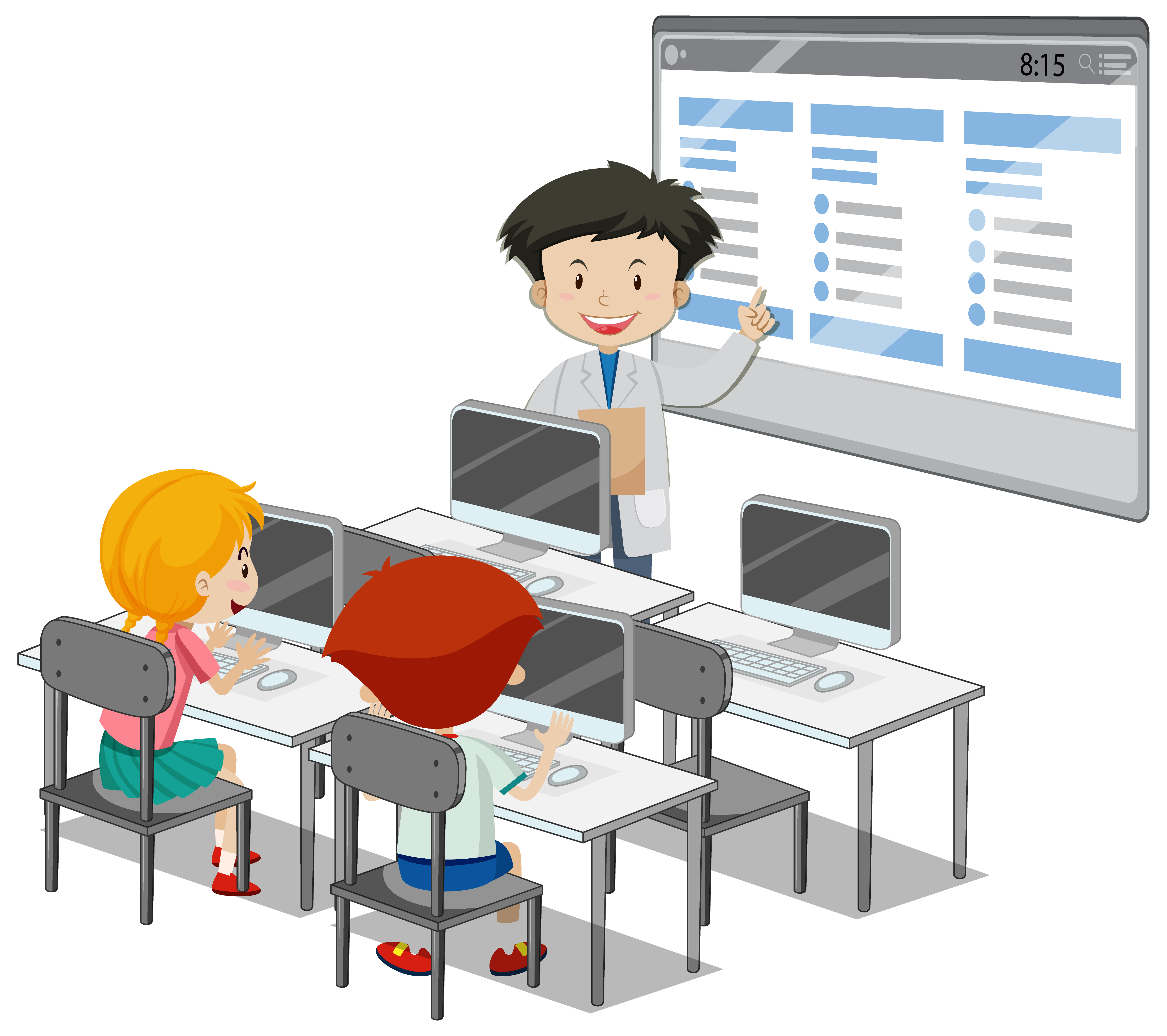Instructor Led Training
CompTIA A+ Core 1 (220-1101) and Core 2 (220-1102)
Instructor-led training (ILT) is a traditional form of education that involves a skilled instructor leading a classroom or virtual session to deliver training to learners.
Limited seat available, enroll before date February 02, 2026.
why should buy instructor led course?
Investing in an instructor-led course offers several advantages that can greatly enhance your learning experience. One of the key benefits is the opportunity to receive expert guidance from seasoned professionals who possess extensive knowledge and expertise in the subject matter. These instructors can offer valuable insights, address your queries, and provide guidance tailored to your specific needs. Additionally, instructor-led courses follow a well-structured curriculum, ensuring a comprehensive learning journey that covers all the essential topics. This structured approach enables you to progress in a logical and organized manner, building a strong foundation of knowledge. Moreover, instructor-led courses often provide personalized feedback, allowing you to receive individualized assessments and guidance to improve your understanding and skills.
Professional Certificate.
Obtaining certification of completion is a significant benefit that comes with many instructor-led courses. This certification serves as formal recognition of your successful completion of the course and showcases your commitment to learning and professional development. It can be a valuable addition to your resume or portfolio, highlighting your expertise and dedication in a specific field or skill set. Certification demonstrates to employers, clients, or colleagues that you have acquired the necessary knowledge and skills to perform tasks effectively. It can enhance your credibility and open doors to new career opportunities or advancements. Moreover, certification provides a sense of accomplishment and satisfaction, validating the time and effort you invested in the course. Ultimately, the certification of completion offers tangible evidence of your commitment to continuous learning and professional growth, making it a worthwhile asset in today's competitive job market.
How Does It Work?


Zoom meeting with student twice a week.
As an educator, I have implemented a structured learning approach by conducting Zoom meetings with my students twice a week. This interactive platform has become an invaluable tool for fostering meaningful connections and facilitating engaging discussions in a virtual classroom setting.


AI Tutor support.
Mentoring support plays a crucial role in guiding individuals towards personal and professional growth. By offering mentorship, I provide a safe and supportive space for individuals to explore their goals, challenges, and aspirations.


Assignments and Grade.
Assignments and grading are essential components of the educational process, allowing students to demonstrate their understanding of concepts and skills while providing teachers with a means to assess their progress. Assignments are designed to reinforce learning, encourage critical thinking, and promote independent problem-solving.
About This Course
Our Core 1(220-1101) and Core 2 (220-1102) online preparatory course is totally in sync with CompTIA A+ certification exam objectives. The course plan focuses on hardware, networking, mobile devices, operating systems, security, and operational procedures. Core 1 is about installation, configuration and troubleshooting of hardware components, networking protocols (TCP/IP); configuration and connectivity of mobile devices; and Virtualization and cloud computing. Core 2 is about administration of Operating Systems in Windows, macOS, and Linux; implementation of security measures; troubleshooting common software issues; and implementing best practices for operational procedures. Plus, our CompTIA A+ Core 1(220-1101) and Core 2 (220-1102) course is fully equipped with hands-on Labs that enables you to learn and practice your new found skills for better understanding.
Skills You’ll Get
Hands-On Labs
109+ LiveLab | 103+ Video tutorials | 01:51+ Hours
Lesson Plan
Introduction
- Goals and Methods
- How the Course Is Organized
- What’s New?
- Who Should Read This Course?
- Strategies for Exam Preparation
- Pearson Test Prep Practice Test Software
- Accessing the Pearson Test Prep Software Online
- Accessing the Pearson Test Prep Software Offline
- Customizing Your Exams
- Updating Your Exams
Mobile Devices
- Installing and Configuring Laptop Hardware and Components
- Display Components of Mobile Devices
- Setting Up and Configuring Accessories and Ports of Mobile Devices
- Configuring Basic Mobile Device Network Connectivity and Application Support
- Review All the Key Topics
Networking
- TCP and UDP Ports, Protocols, and Their Purposes
- Networking Hardware
- Compare and Contrast Wireless Networking Protocols
- Services Provided by Networked Hosts
- Install and Configure a Basic Wired/Wireless SOHO Network
- Network Configuration Concepts
- Internet Connection Types, Network Types, and Their Features
- Using Networking Tools
- Review All the Key Topics
Hardware
- Basic Cable Types
- Installing RAM Types
- Installing Storage Devices
- Installing Motherboards, CPUs, and Add-on Cards
- Power Supplies
- Multifunction Devices/Printers and Settings
- Print Technologies
- Review All the Key Topics
Virtualization and Cloud Computing
- Common Cloud Models
- Client-Side Virtualization Overview
- Review All the Key Topics
Hardware and Network Troubleshooting
- Troubleshooting Methodology
- Troubleshooting Motherboard, RAM, CPU, and Power Issues
- Troubleshooting Storage Drives and RAID Arrays
- Troubleshooting Video, Projector, and Display Issues
- Mobile Device Troubleshooting
- Printer Troubleshooting
- Network Troubleshooting
- Review All the Key Topics
Operating Systems
- Basic Features of Microsoft Windows Editions
- Microsoft Command-Line Tools
- Microsoft Windows 10 Operating System (OS) Features and Tools
- Windows 10 Control Panel Utilities
- Windows Settings
- Microsoft Windows Networking Features on a Client/Desktop
- Installation and Configuration Concepts
- Understanding Common OS Types
- OS Installations and Upgrades in a Diverse OS Environment
- Common Features and Tools of the macOS/Desktop OS
- Common Features and Tools of the Linux Client/Desktop OS
- Review All the Key Topics
Security
- Security Measures
- Wireless Security Protocols and Authentication
- Malware Removal and Prevention
- Social Engineering Threats and Vulnerabilities
- Microsoft Windows OS Security Settings
- Security Best Practices to Secure a Workstation
- Securing Mobile Devices
- Data Destruction and Disposal
- Configuring Security on SOHO Networks
- Configuring Browser and Relevant Security Settings
- Review All the Key Topics
Software Troubleshooting
- Troubleshooting Common Windows OS Problems
- Troubleshooting Common PC Security Issues
- Best Practice Procedures for Malware Removal
- Troubleshoot Common Mobile OS and Application Issues
- Troubleshoot Common Mobile OS and Application Security Issues
- Review All the Key Topics
Operational Procedures
- Best Practices and Documentation
- Change Management
- Workstation Backup and Recovery Methods
- Explain Common Safety Procedures
- Environmental Impacts and Appropriate Controls
- Addressing Prohibited Content/Activity and Privacy, Licensing, and Policy Concepts
- Communication Techniques and Professionalism
- Scripting Basics
- Remote Access Technologies
- Review All the Key Topics
Final Preparation
- Exam Information
- Getting Ready
- Tools for Final Preparation
- Summary
Frequently asked questions
Ready to get started?
